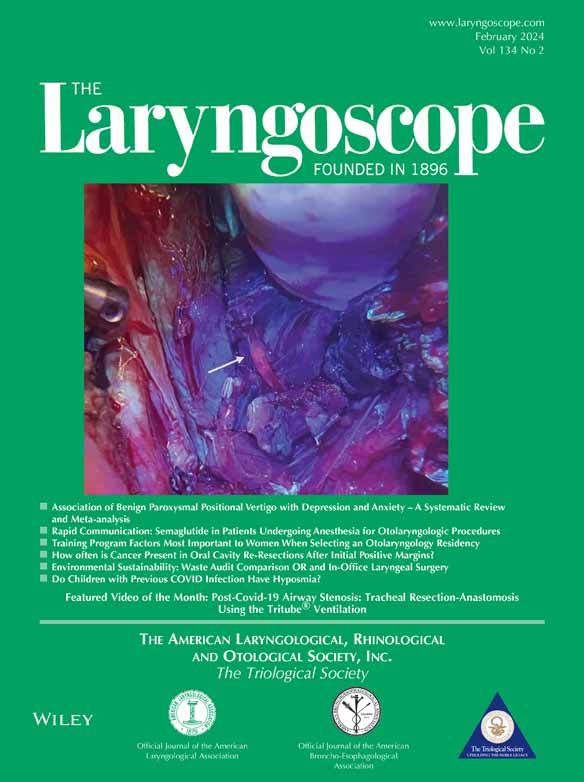Utility of Extended High-Frequency Audiograms in Clinical Practice
Triological Combined Sections Meeting, Coronado, CA, January 26–29, 2023.
Editor's Note: This Manuscript was accepted for publication on July 1, 2023.
The authors have no funding, financial relationships, or conflicts of interest to disclose.
Abstract
Objectives
Extended high-frequency (EHF) audiometry elicits pure-tone thresholds at frequencies above 8 kHz, which are not included in routine clinical testing. This study explores the utility of EHF audiometry in patients with various audiologic symptoms despite normal-hearing thresholds at ≤8 kHz.
Methods
A retrospective review was performed of all patients receiving conventional (250–8 kHz) and EHF (9–20 kHz) audiometry at a tertiary otological referral center between April 2021 and August 2022. Only patients with audiologic symptoms and pure-tone thresholds ≤25 dB HL at ≤8 kHz bilaterally on routine testing were included in subsequent analysis. EHF-PTA was defined for each ear as an average of the air conduction thresholds at 9.0, 10.0, 11.2, 12.5, 14.0, 16.0, 18.0, and 20.0 kHz.
Results
Of the 50 patients who received EHF testing, 40 had audiologic symptoms and normal conventional audiograms at ≤8 kHz. Twenty-five of the 40 (62.5%) were found to have hearing loss in the highest frequencies. Patients with EHF hearing loss (EHF-HL) were more likely to report subjective hearing loss. Age was significantly greater in those with EHF-HL compared with those without EHF-HL, and age was positively correlated with the degree of EHF-HL.
Conclusion
EHF testing correlates with audiologic symptoms in patients with normal testing at ≤8 kHz and may be considered when standard audiometry is normal. Additional data are warranted to create an evidenced-based, clinical algorithm for EHF audiometry that can guide treatment, direct mitigation strategies, and potentially identify those at higher risk of hearing loss over time.
Level of Evidence
4 Laryngoscope, 134:907–910, 2024




